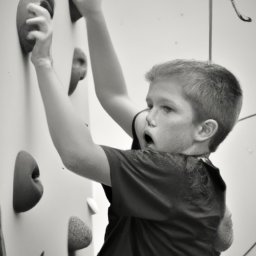Are you concerned about your child’s ability to overcome obstacles and solve problems? Developing grit may be the key. Grit is a term used to describe a combination of perseverance, passion, and resilience in the face of challenges. This mindset is increasingly recognized as a critical factor in success, both in academics and in life.
Research has shown that grit can be learned and developed, and that it has a significant impact on problem-solving skills in children. By fostering grit, parents and educators can help children become more resilient, persistent, and self-motivated when faced with challenges.
In this article, we will explore the science behind grit and how it impacts problem-solving skills in children. We will also provide practical tips for parents and educators to help children develop grit and overcome obstacles.
Key Takeaways
- Grit can be learned and developed in children, and parents and educators can help cultivate it by encouraging goal-setting, praising effort and persistence, and modeling grit.
- Developing a persevering attitude can enhance a child’s ability to find creative solutions to challenging situations, build resilience, and cultivate resourcefulness.
- Teachers can promote collaborative learning and project-based activities to help students develop grit and problem-solving skills, and praising effort and persistence is essential in fostering a growth mindset.
- Failure is a natural part of the learning process and can help develop problem-solving skills and a positive attitude towards learning and problem-solving, which can benefit children for the rest of their lives.
What is Grit and Why is it Important?
Grit isn’t just important, it’s absolutely essential for children to develop problem-solving skills. Grit is defined as the ability to persevere through difficult tasks and setbacks. It’s the determination to keep going even when things get tough.
Some examples of grit include studying for a test even when you feel like giving up, or practicing a skill even when you’re not seeing immediate improvement.
So, how can you cultivate grit in children? One way is to encourage them to set goals and work towards them, even if they encounter obstacles along the way. It’s important to praise effort and persistence, rather than just focusing on achievement.
Additionally, modeling grit yourself can have a big impact on children. Show them how you persevere through challenges and don’t give up easily.
With practice and support, children can develop the grit they need to become successful problem-solvers.
The Science Behind Grit
You’ll be surprised to learn the scientific explanation behind why some people have a never-give-up attitude. Recent studies have shown that grit, the ability to persevere through challenges and setbacks, is partly determined by brain development. Specifically, grit is linked to the prefrontal cortex, the part of the brain responsible for executive functions such as decision-making, planning, and impulse control.
Furthermore, researchers have found a connection between grit and emotional regulation. People with high levels of grit are better able to regulate their emotions in stressful situations, allowing them to stay focused and motivated towards their goals. This ability to manage emotions is also linked to the prefrontal cortex, which plays a key role in emotional regulation.
So, if you want to improve your grit, working on developing your prefrontal cortex and emotional regulation skills could be the key.
How Grit Impacts Problem-Solving Skills in Children
Developing a persevering attitude can enhance a child’s ability to find creative solutions to challenging situations. When children are faced with obstacles, they may feel discouraged and give up easily. However, if they have developed perseverance through grit, they are more likely to persist and find alternative solutions. This can lead to the development of creativity as they explore different ways to solve the problem.
Grit also plays a role in building resilience and cultivating resourcefulness in children. When they encounter obstacles, they are more likely to view them as opportunities for growth rather than setbacks. This mindset allows them to approach challenges with a positive attitude and seek out new strategies to overcome them. By fostering these skills, parents and educators can help children develop a strong foundation for problem-solving that will serve them well throughout their lives.
| Building Resilience | Cultivating Resourcefulness | |||
|---|---|---|---|---|
| Encouraging children to take risks | Teaching children to think outside the box | |||
| Providing opportunities for children to practice problem-solving | Helping children develop a growth mindset | |||
| Praising effort and persistence | Encouraging children to seek out new strategies | Fostering a love of learning and exploration | Empowering children to believe in themselves and their abilities |
Practical Tips for Parents
As a parent, it’s important to provide opportunities for your child to practice persistence and creative problem-solving. Building resilience and encouraging perseverance can help your child develop a grit mindset, which is essential for overcoming obstacles.
Encourage your child to take risks, even if it means failing at first. Failure is a natural part of the learning process, and it can help your child develop problem-solving skills and learn from their mistakes.
Praising your child’s effort is also essential in fostering a growth mindset. Instead of focusing on the outcome, focus on the process and recognize the effort your child puts in. This can help your child develop confidence in their abilities and motivate them to keep trying, even when faced with challenges.
By providing a growth mindset, you can help your child develop a positive attitude towards learning and problem-solving, which can benefit them for the rest of their lives.
Practical Tips for Educators
Teachers, incorporating growth mindset principles into your curriculum can greatly benefit your students’ learning and overall development. By promoting collaborative learning, you can encourage your students to work together, share ideas, and learn from each other. This can lead to improved problem-solving skills and a greater sense of community within the classroom.
Additionally, project-based activities can help students develop grit by allowing them to face challenges and persevere through difficult tasks. Here are three tips for incorporating collaborative learning and project-based activities into your curriculum:
-
Design group projects that require students to work together to solve a problem or complete a task. Encourage students to share their unique perspectives and ideas, and provide opportunities for them to give and receive feedback on their work.
-
Create a safe and supportive classroom environment where students feel comfortable taking risks and making mistakes. Encourage students to view mistakes as opportunities to learn and grow, and provide constructive feedback to help them improve.
-
Use real-world examples and scenarios to help students understand how the concepts they’re learning can be applied in practical situations. This can help students develop a deeper understanding of the material and improve their problem-solving skills.
Frequently Asked Questions
How does grit differ from persistence or determination?
When comparing grit to persistence or determination, it’s important to note that while all three involve persevering through challenges, there are subtle differences.
Grit involves having a long-term goal and being committed to achieving it, even when faced with setbacks or failures.
On the other hand, persistence refers to continuing to work towards a goal even when faced with obstacles, but it may not necessarily involve a long-term commitment.
Finally, determination involves having a strong will to achieve a goal, but may not involve the same level of passion and commitment as grit.
By understanding these nuances, you can better understand how to cultivate grit in yourself or in children.
Can grit be developed or is it an innate trait?
You might be wondering if grit is something you’re born with or if it’s something that can be developed. The good news is that grit can definitely be developed!
There are a variety of grit development strategies that you can try, such as setting goals, practicing self-discipline, and seeking feedback. By actively working to develop your grit, you can have a significant impact on your academic success.
Research has shown that students who possess more grit tend to have higher grades, better attendance, and are more likely to graduate from high school. So don’t worry if you don’t feel like you have a lot of grit right now – with some effort and determination, you can work towards developing this important trait.
Are there any negative effects of having too much grit?
Having too much grit can potentially have some drawbacks, especially when it comes to mental health. While being persistent and determined can be beneficial in achieving goals, it can also lead to burnout and stress if taken to an extreme.
Additionally, having an excessive focus on a single goal can cause individuals to neglect other important aspects of their lives, such as relationships and self-care. It’s important to find a balance between perseverance and flexibility, and to recognize when it’s necessary to take a break or adjust one’s approach.
How does grit impact other areas of a child’s life, beyond problem-solving skills?
Grit not only impacts problem-solving skills in children, but it also has a significant impact on emotional intelligence and social skills development.
With grit, children are more likely to persevere through challenges and setbacks, which can lead to increased emotional resilience and self-awareness.
Additionally, the determination and tenacity that come with grit can positively affect a child’s ability to build relationships, communicate effectively, and work collaboratively with others.
By fostering grit in children, parents and educators can help them develop a variety of essential life skills that will serve them well both academically and personally.
How can parents and educators recognize and support the development of grit in children with different learning styles or challenges?
To recognize and support the development of grit in children with different learning styles or challenges, it’s important to use individualized approaches and strength-based strategies.
This means focusing on the child’s strengths and building upon them to help them overcome obstacles. If a child is struggling with math, but excels in art, incorporating art into math lessons may help the child better understand the concepts.
Additionally, it’s important to recognize that every child has their own unique learning style, and what works for one child may not work for another. By using individualized approaches and strength-based strategies, parents and educators can help children develop grit and overcome challenges in their own way.
Conclusion
Congratulations! You now have a deeper understanding of grit and its impact on problem-solving skills in children. By developing grit in children, they can persevere through challenging obstacles and become successful problem-solvers.
Whether you’re a parent or an educator, there are practical tips you can implement to help children develop grit. Encourage a growth mindset, provide opportunities for failure and learning from mistakes, and foster a sense of purpose and passion.
Remember, developing grit is not a one-time task, but a lifelong journey. By instilling grit in children, we can equip them with the skills they need to tackle any challenge that comes their way.
So, keep working on developing grit in children and watch them flourish into confident and resilient problem-solvers.












































































































